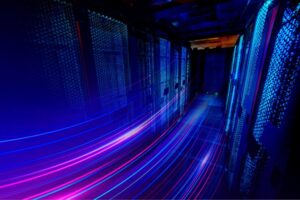In a web-based network monitoring system, there is indeed a special network that is useful for the management and maintenance of the infrastructure within it. This allows network administrators to more easily ensure that every network component continues to function well without potential issues within it.
Why Should You Use a Network Monitoring System?
Network monitoring systems have become crucial in ensuring that every computer network can operate and function better, including in the process of preventing problems and fixing issues that may occur within it. The use of this monitoring system also has many advantages inherent in it.
The first advantage is helping to improve network performance, including maintaining network security and preventing network outages. Not only that, but you can also assist in the planning process and achieve more efficient time savings. With that, all network-related issues can be resolved more quickly.
It is important to understand that this monitoring system helps network administrators or experts within it to carry out monitoring processes more practically, including troubleshooting issues within the network.
How is the Process of the Network Monitoring System?
A network monitoring requires several steps and keywords that work directly together to provide a complete picture of what is happening within its performance. For more details, don’t forget to pay attention to the steps below!
1. Data Collection Process
The first step that needs to be taken is data collection with complete information starting from several specific networks related to IoT devices to servers, switches, and routers. This data can later directly cover several important network performances, from CPU, bandwidth to memory for recording network errors.
2. Data Management and Analysis Process
When the data collection is complete, the next process is the management and analysis of the data within it. This process uses many algorithms and also appropriate analysis techniques to assist in the detection of anomalies or important patterns within it. For example, the use of bandwidth indicates a configuration attack.
3. Detection and Warning Process
The third process is to carry out detection and warning processes with a specially designed faster approach. When the detection provided is accurate as an early anomaly problem, the warning given can also be more significant in relation to the more crucial network administrator alerts within it.
It is important to understand that this warning can be sent directly via email or other notifications to assist the IT team in taking action based on it.
4. Reporting Process
Just like other processes, network monitoring also requires an appropriate reporting process for more accurate data visualization. Monitoring tools are usually supported by the provision of dashboards that help present the network status more realistically and directly, allowing you to obtain more detailed information according to the specified period.
What Are the Network Monitoring Techniques That Can Be Used?
You need to know that in the process of network monitoring, there are indeed special techniques to detect problems accurately and efficiently. As for the technique in question, you can check the complete explanation below!
1. Log Management
Log Management helps the process of log management and analysis to include the importance of network monitoring within it. This log can later be filled with important information ranging from network activities to access errors and security within it. This management tool can automatically analyze logs, including patterns and network health insights, more accurately.
2. Agent and Non-Agent Basis
Next, you can use agent-based monitoring, which involves installing small software on the monitored devices to send performance data to the monitoring server. If you don’t use an agent, standard protocols like SNMP can be used to collect data without the need for additional software installation.
3. Ping and Traceroute
You need to know that ping is a basic tool used to test the connectivity between two network devices. Then, Traceroute is used to trace the route taken by a device to reach another destination. Both are clearly inseparable and capable of detecting network problem diagnoses more accurately within them.
4. NetFlow and sFlow
Next, there are NetFlow and sFlow, which are equally good to use. This technology is used for the process of information gathering and also provides important alerts regarding network traffic. You can directly conduct an in-depth analysis of the data that has already moved within the network, including the detection of bandwidth optimization anomalies.
5. SNMP (Simple Network Management Protocol)
The next process is SNMP (Simple Network Management Protocol), which is a protocol used for the management and monitoring of network devices. With this support, power collection can be improved, and the supporting devices can also meet the administrator’s needs, including remote device configuration.
Netmonk Becomes a Network Monitoring Application with Comprehensive Techniques
You don’t need to worry about covering all the techniques that have been provided. You can use Netmonk as support. Netmonk includes many crucial features that can be used for easier monitoring within it. So that the business and website you have can be used more safely in the long term.
Netmonk has many features that assist in the process of deeper analysis and evaluation within companies in the digital field. Some of the features mentioned, check them all out below!
- Providing bandwidth usage reports that become important network statistics and are included in the company’s monitoring within the company. This network is close to the maximum data transfer speed supported by more intensive resources.
- Next is the scalability feature related to the accommodation process of hardware and also connections. This is related to a safer bet, especially NPM, to improve network conditions.
- The third feature is a visual map that can help you create a visual representation of the network to support network mapping and important topography within it. So you can more easily see the network system of devices that remain connected.
- Netmonk helps with the compatibility of the SNMP used. SNMP is an abbreviation for Simple Network Management Protocol. It contains frameworks or frames that are compatible with computers, IoT devices, and switches. As a result, you communicate with the devices according to the monitoring needs of the devices.
Netmonk is the best choice to support more complex network monitoring needs compared to other monitoring applications. The level of security and cost-effectiveness is also better suited for long-term needs. That way, the business being run can be safer.






